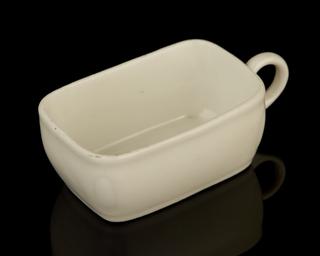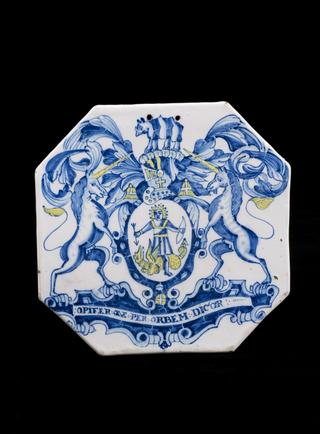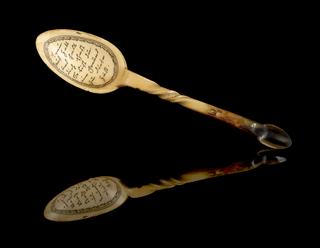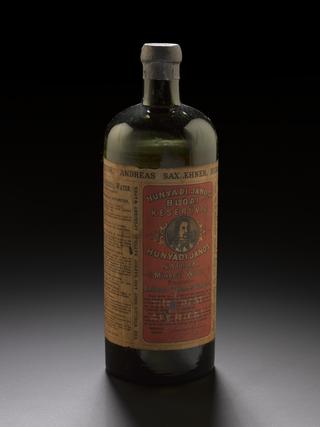


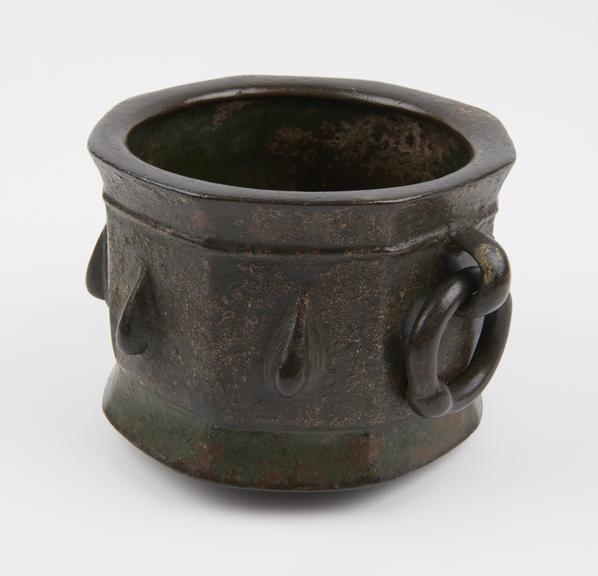

Octagonal bronze mortar, flat rim, base bowed and cracked through use, loop handle threaded with ring, seven cone-shaped bosses, Persian, 14th century
A mortar is a bowl used with a pestle to crush and grind ingredients for drug preparations. Drugs were often in the form of powders, ointments or solutions. This octagonal mortar is made from bronze and has a loop handle. It is quite heavy, weighing just over 4 kg, so it would not have been knocked over easily. See how it is unbalanced at the base? The foot of the mortar has worn because of use and there is also a crack in one side where over time the pounding of the pestle has damaged the bronze. This mortar was made in Persia (modern day Iran).
Details
- Category:
- Pharmacy-ware
- Collection:
- Sir Henry Wellcome's Museum Collection
- Object Number:
- A41580
- Materials:
- bronze
- Measurements:
-
overall: 120 mm x 184 mm 159 mm, 4.175kg
- type:
- mortar
- credit:
- Sotheby's
